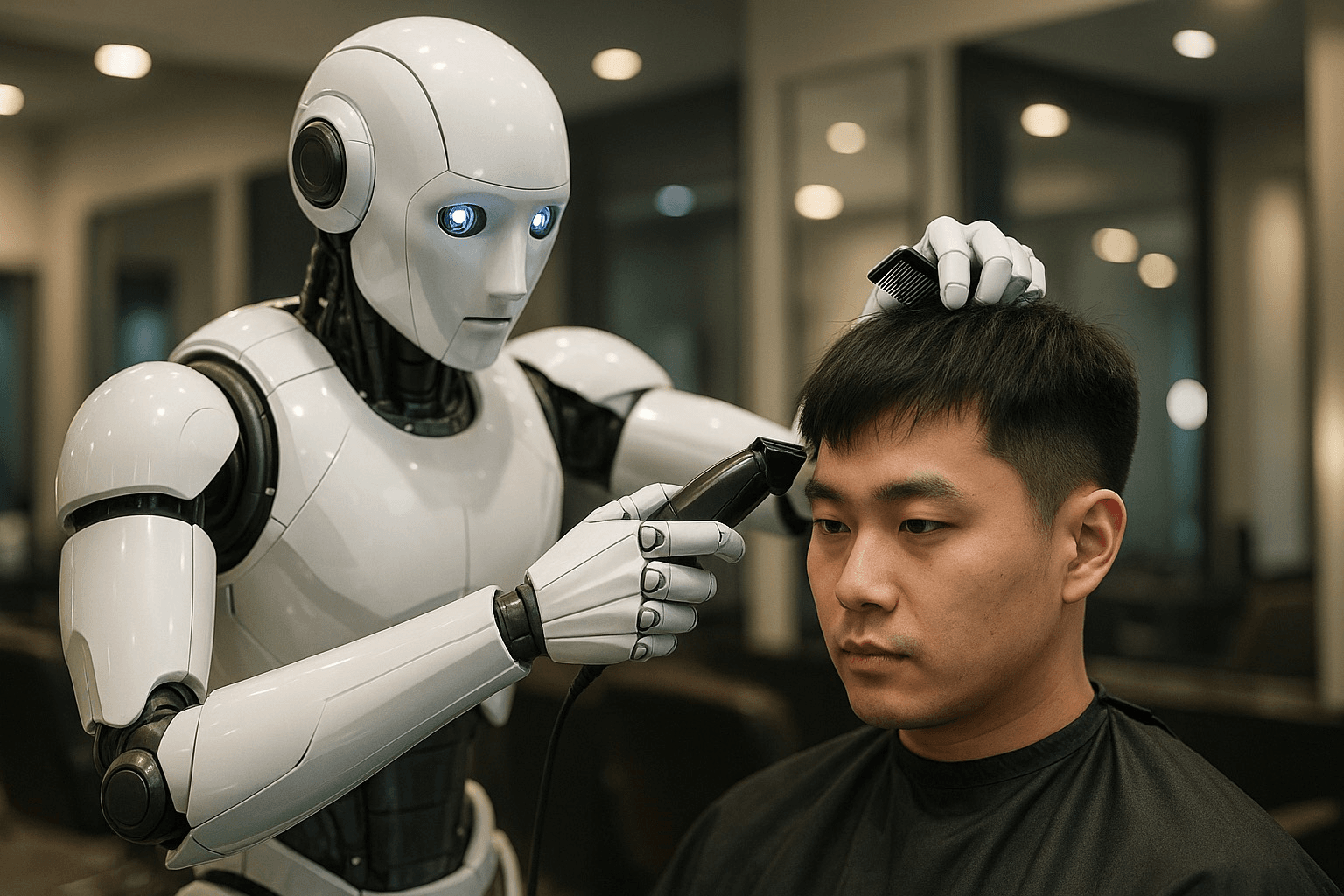By Beautiful Machine Magazine Staff

For centuries, a haircut has been a deeply human ritual—part artistry, part conversation, part trust. You sit in the chair, exchange a few words (or not), and trust that the person holding the scissors understands your hair, your style, and your personality. But in a future that’s arriving faster than many imagined, those hands might not belong to a person at all. They might belong to a robot—powered by artificial intelligence, precision engineering, and an uncanny ability to remember every detail about your hair.
The Rise of the Robotic Stylist
China is emerging as a leader in this space. Companies like MagicLab have already unveiled humanoid robots, such as their prototype “Xiaomai,” that can handle an array of salon tasks, from precise trims to intricate styling. Using advanced sensors, AI-driven vision systems, and dexterous robotic arms, these machines can map the exact shape of your head, analyze hair type, and execute cuts with near-microscopic accuracy—eliminating human error from the equation.
Meanwhile, Faxiaoka AI Hair Care is preparing to roll out AI-powered hair-washing robots in Hong Kong in 2025. These systems don’t just lather and rinse; they scan the scalp, assess oil levels, and adapt water temperature and massage pressure in real-time for a personalized wash that feels—if early testers are to be believed—better than most humans can deliver.
Precision Meets Personalization
What makes AI-powered haircutting truly revolutionary isn’t just the novelty—it’s the precision and consistency. Imagine walking into a salon and having a robot pull up your entire haircut history, down to the millimeter. That perfect fade you got last summer? It can replicate it exactly, every single time. Want a small tweak? Just tell the interface—or better yet, let it analyze your facial structure and current style trends to recommend one.
The robot doesn’t get tired, distracted, or nervous. It doesn’t “interpret” your request—it executes it with mathematical precision. In high-volume environments, this could mean shorter wait times and more consistent results for clients, while human stylists focus on creative, bespoke work.
The Human Factor
Still, the idea of a robot with scissors near your head is enough to make some people uneasy. Haircutting is intimate work, and for many, the human connection is just as important as the cut itself. That’s why the most likely future isn’t about replacing barbers and stylists, but augmenting them. Picture a high-end salon where robots handle the repetitive technical work, while humans focus on artistry, consultation, and the emotional experience.
From Sci-Fi to Salon Reality
Today, AI-powered haircutting remains in its early stages. Demonstrations and pilot programs are impressive but far from widespread. But the trajectory is clear: in the coming decade, we’ll see these systems become smarter, safer, and more widely adopted. From luxury hotels offering in-room robotic cuts to busy airports with express AI grooming stations, the convenience and precision will be hard to resist.
And as with most technological revolutions, the shift will happen subtly—first as a novelty, then as an option, and finally as the norm. One day soon, you may find yourself in the chair, greeted not by “So, what are we doing today?” but by a gentle robotic voice saying, “Shall I repeat your last style or suggest something new?”
The future of haircutting is arriving. It hums softly, works with perfect accuracy, and never forgets a face—or a fade.
